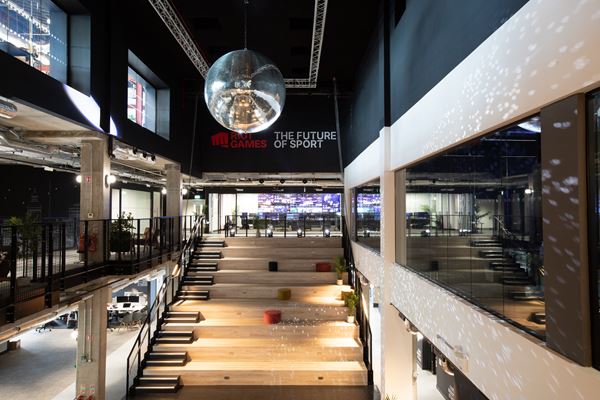Riot Games teams up with AWS on a new playbook to make the studio a major contender in the electronic sports arena. The studio also opens a remote broadcast center.

Esports is legit and growing in popularity. Schools have formed esports teams. Colleges are offering courses, and at least one even a degree, in esports. And why not? Competing is fun, and it is big business. Riot Games has recognized the draw of esports for quite some time, and recently teamed up with Amazon Web Services (AWS) to transform how its esports content is created and distributed to the cloud.
Video game developer and esports tournament organizer Riot Games is the first to use AWS’s data analytics integration for esports broadcasts, providing fans with a plethora of information during its massive League of Legends (LoL), Valorant, and League of Legends: Wild Rift events. Riot will use AWS services to enhance the fan experience during the events with key status and information akin to what is provided by major non-esports leagues like the NFL, Formula 1, NHL, and others during broadcasts.
“The wide-ranging solutions and expertise of AWS will enhance Riot Games’ esports broadcasts and engage esports fans worldwide. From reimagining how fans view our events and content, to interacting with other players, AWS unlocks endless opportunities for Riot to shape the future of sport,” said John Needham, president of esports at Riot Games.
The partnership between Riot and AWS is not new. Until now, Riot has used AWS services to design and deploy content. Now, it will be working with the cloud services provider to enhance its global esports event broadcasts throughout the competitive season for these titles: LoL Esports, the Valorant Champions Tour, and Wild Rift Esports.
Riot will use AWS’ broad portfolio of cloud capabilities (AI, machine learning, deep learning, and others) to provide fans with new insights and experiences. This includes esports stats that will appear before, during, and after the various global esports broadcasts to educate and inform fans on key data points regarding team performance and strategy.
Riot will also launch AWS Global Power Rankings, which will utilize AWS’s analytics capabilities to review competitive gameplay.
In addition, through AWS’s machine learning technologies, esports fans also will be able to participate in bracket challenges throughout the competitive season and win prizes for correctly selecting the teams that make it to each championship event.
“Our collaboration with Riot Games elevates the entire esports landscape,” said Matt Garman, senior vice president of sales, marketing, and global services at AWS. “This is a win, win, win for Riot, AWS, and fans. Tournament viewers and teams can now see in real time how different lanes, weapons, and abilities could determine who will become champions, similar to the stats used in other sports broadcasts.”
Inaugural Project Stryker facility

In other related news, Riot is introducing Project Stryker, a series of cloud-first remote broadcast centers that leverage AWS technologies to enable these facilities to support Riot’s current and future ambitions to reimagine the entertainment experience. While esports and analytics/stats will be a major focus, it will also extend to other forms of entertainment, too, such as music production, animation, and game development.
The first of these remote broadcast centers just opened in Dublin, Ireland, with a second facility in the greater Seattle area set to be online later this year. These centers will produce and support live content anywhere in the world at any time of day, regardless of where the event is taking place. Each locale will also house a data center and media content vault where content will be archived.
Under development for three years, the state-of-the-art 50,000-square-foot Dublin remote broadcast center serves as a central broadcasting hub for both regional and global live esports productions associated with Riot’s trio of esports titles. Broadcast feeds from live esports competitions occurring anywhere can be sent to the Dublin center, where content is produced, broadcast, and distributed in multiple languages to millions of esports fans around the world.
In fact, Dublin will serve as the European headquarters for Project Stryker. The center is expected to generate over 6,300 production hours annually for broadcast production, engineering, event, sound, and graphic design professionals.
The three remote broadcast centers making up Project Stryker are strategically located eight hours apart to create a “follow-the-sun” broadcast model to support live esports productions 24/7/365. (The third location will be in the Asia-Pacific region.)
During a live esports event, a small contributor kit on-site sends live feeds back to the center through Riot Direct, the global private Internet service provider powering every Riot game packet for every player around the world. The feeds are then routed to control rooms for unique show productions across multiple languages.
In addition to content production, each center will also serve as a centralized storage and shipping location for global competition hardware.
As part of its collaboration with Riot Games, AWS will have the exclusive naming rights of each remote broadcast center. Riot Games and Amazon have worked together on esports broadcasts on Twitch, as well as Prime Gaming content drops for Riot titles. AWS is now a sponsor for Riot Games’ global esports events as well as a founding sponsor of Wild Rift Esports.





